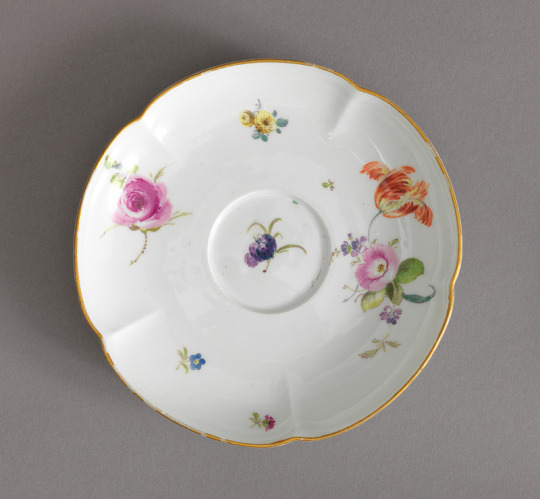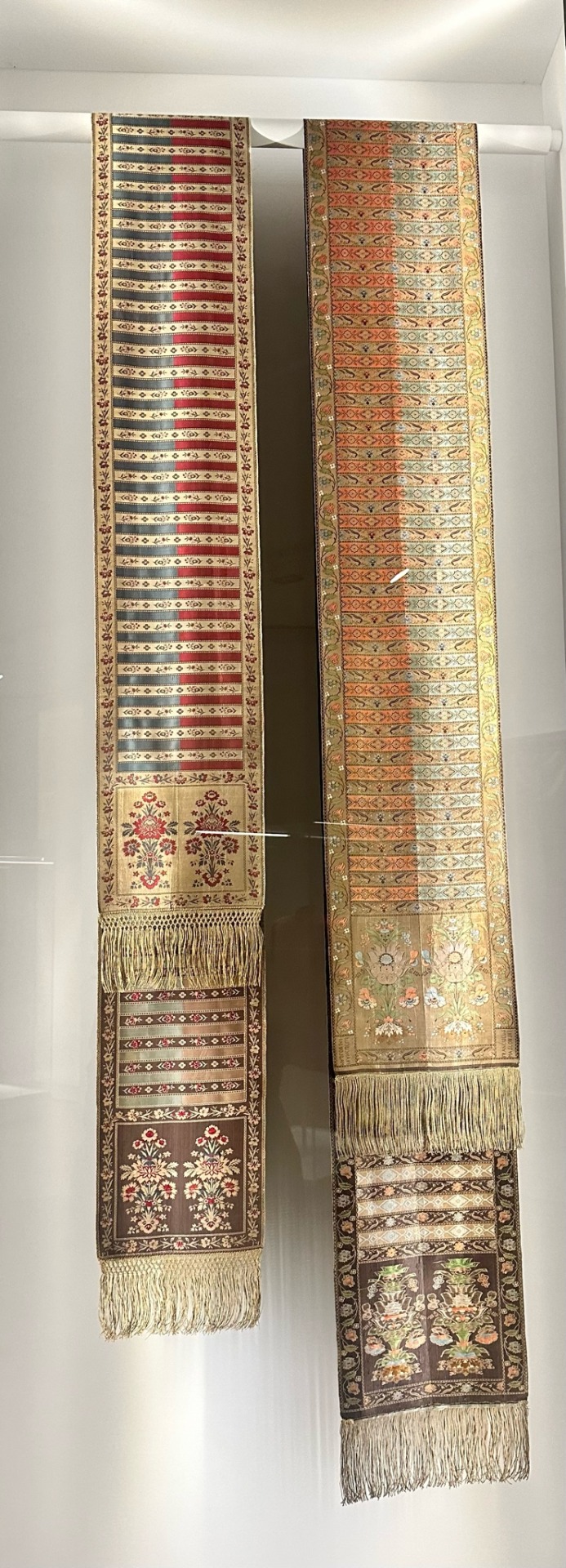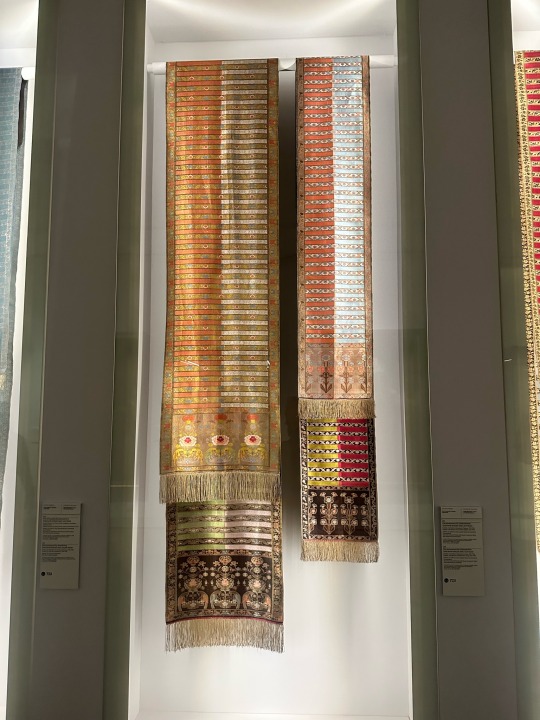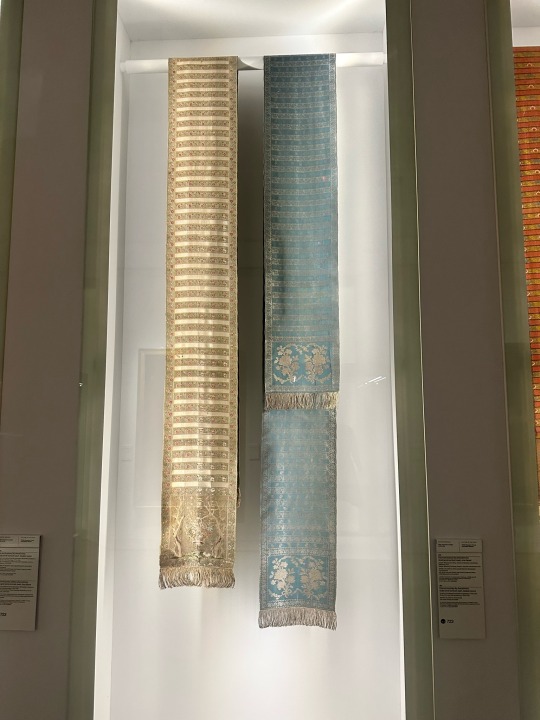#manufacturi
Text

Artisans of the Baccarat crystal manufactury, Lorraine region of eastern France
French vintage postcard
#carte postale#ephemera#vintage#postcard#postkaart#baccarat#eastern#old#france#photography#french#manufactury#historic#photo#lorraine#postal#briefkaart#ansichtskarte#region#crystal#artisans#tarjeta#postkarte#sepia
8 notes
·
View notes
Text

Unsere DAMASKO DC76/2 mit braunen "Snow Calf" Lederband fügt sich perfekt in die bunte Herbstzeit ein. Finde jetzt Deine DAMASKO-Uhr für alle Deine Unternehmungen!
Our DAMASKO DC76/2 with brown "Snow Calf" leather strap fits perfectly into the colorful autumn season. Find your DAMASKO watch for all your adventures now!
#damaskowatches#watch#watches#autmn#herbst#snowcalf#lederband#leatherstrap#dc76/2#chronograph#nature#picoftheday#findyourdamasko#bavaria#manufactury#madeingermany#fridayforphotography#outside#watchesforeveryday#light#damaskodream
4 notes
·
View notes
Text
How To Choose Nutraceutical Third Party Manufacturing Company in India?

When it comes to choosing a nutraceutical third party manufacturing company in India, selecting the right partner is crucial for ensuring high-quality and safe products. India has emerged as a major hub for nutraceutical manufacturing due to its advanced infrastructure and skilled workforce.
Aesthetic Softcaps, a prominent nutraceutical third party manufacturing company in India, has firmly established its reputation as a provider of high-quality and reliable services. The company's unwavering commitment to adhering to strict quality control measures ensures that all products manufactured under their supervision meet the highest industry standards and comply with regulations. Choose Aesthetic Softcaps, trusted top nutraceutical third party manufacturing company in India.
Call: +91-7042630159
Mail: [email protected]
#Nutraceutical Third Party Manufacturing Company#Best Nutraceutical Third Party Manufacturing Company#Top Nutraceutical Third Party Manufacturing Company#Nutraceutical Third Party Manufacturing Company in India#Top Nutraceutical Third Party Manufacturi
0 notes
Text

#𝐁𝐥𝐚𝐢𝐧𝐯𝐢𝐥𝐥𝐞 𝐌𝐢𝐭𝐬𝐮𝐛𝐢𝐬𝐡𝐢 est à la recherche d’un 𝐌𝐞́𝐜𝐚𝐧𝐢𝐜𝐢𝐞𝐧 !! 🔧 Tu as 𝐝𝐞 𝐥’𝐞𝐱𝐩𝐞́𝐫𝐢𝐞𝐧𝐜𝐞 𝐞𝐧 𝐦𝐞́𝐜#dynamique et t’aidera à avancer dans ton domaine? 💪
Nous avons la chance d’avoir#sur place#des personnes d’expérience afin d’aider les nouveaux à grandir et évoluer dans le métier. 📈 Aussi#notre manufacturier Mitsubishi offre des formations afin de bien outiller nos équipes. 💡
Avec les nouvelles installations chez 𝐁𝐥𝐚𝐢𝐧𝐯𝐢𝐥𝐥𝐞#les employés ont accès aux aires de divertissements pendant les pauses ou encore#après le travail. Il nous fait toujours plaisir d’aider les employés dans leurs défis quotidiens lorsque ceux-ci donnent leur maximum pour#lorsque votre enfant est malade#etc…
▪𝐄𝐱𝐢𝐠𝐞𝐧𝐜𝐞𝐬 𝐞𝐭 𝐪𝐮𝐚𝐥𝐢𝐭𝐞́𝐬 𝐝’𝐞𝐦𝐛𝐚𝐮𝐜𝐡𝐞 :
- 5 ans d’expérience en mécanique;
- Expérience en technologie électrique et électronique;
- Dés#envoie ton CV à l'adresse :
📩 [email protected]
BlainvilleMitsubishi recrutement
0 notes
Text
The main obstacles to the Turkish Commercial Revolution.
Turkish industry and exports.
Just a few regulations prevent the Turkish Commercial Revolution and Economic Boom.
The Acts of Attorneys, the Acts of judges and prosecutors, the Acts of the notary public, the Acts of Dijanet, and the Acts of the Chamber of Commerce are the biggest obstacles to economic development in Turkey. After these laws are repealed, I calculate that the income to be collected by the Turkish IRS from…

View On WordPress
0 notes
Text
The main obstacles to the Turkish Commercial Revolution.
Turkish industry and exports.
Just a few regulations prevent the Turkish Commercial Revolution and Economic Boom.
The Acts of Attorneys, the Acts of judges and prosecutors, the Acts of the notary public, the Acts of Dijanet, and the Acts of the Chamber of Commerce are the biggest obstacles to economic development in Turkey. After these laws are repealed, I calculate that the income to be collected by the Turkish IRS from…

View On WordPress
0 notes
Text
I’m sure everyone remembers the article from 2020 where researches found three-ply cordage made by Neanderthals.^
But did you know that in the supplemental material for the article, it mentions that pine needles can be made into textiles?^^ As someone who works with textiles myself, I had come across pine needles as a dye stuff, but not as a fibre.
The source is listed as "L’acquisition des matières textiles d’origine végétale en Préhistoire" by Fabinne Médard. It talks about how other fibres, including brambles and broom could have been used prehistorically for a similar purpose, as well as flax. However, it contains only one metion of pine needles.
“Les aiguilles du pin sylvestre (Pinus sylvestris L.) fournissaient, après rouissage, une matière textile appelée « laine des forêts » qui remplaçait la ouate et l’étoupe dont on faisait également des tissus (Mathieu [1858] 1897)" *
The needles of the Scots pine (Pinus sylvestris L.) provided, after retting, a textile material called “forest wool” which replaced wadding and tow from which fabrics were also made.
So Scots pine needles were processed, spun and woven, or simply used directly after processing, potentially prehistorically.
If you follow the source for the quote above, it takes you to a book from 1860 called Flore forestière; description et histoire des végétaux ligneux qui croissent spontanément en France et des essences importantes de l'Algérie. It says:
“On fabrique depuis quelques années, avec les faisceaux fibreux, allongés, et tenaces des aiguilles, une espèce de drap grossier.” **
For several years, we have been making a kind of coarse cloth using the fibrous, elongated and stiff bundles of the needles.
So this processing of pine needles was also happening in the 1800s.
Another souce from the 1840s describes the texture of forest wool as resembling "...horsehair, and has been used for stuffing mattresses"** and that an industry sprung up in Humboldtsau, near Breslau for processing it. Manufacturies for forest wool then spread to Sweden, Holland and France, which may explain the mention in the 1860 Flore forestière.
Despite looking a bit more, but couldn't find much else on the subject expect a recent masters thesis in German (which I couldn't access) and an article on the designer Tamara Orjola.
Orjola's work investigates the modern use of pine needle fabric, showing there is still interest in it. She says:
"Forest Wool began with research on the forgotten value of plants. Valuable local materials and techniques are left behind due to the unwillingness of mass-production to adopt more sustainable practices. In the old days the pine tree was used as food, remedies, to build homes and furniture and for many other purposes. Nowadays, it is only valuable for its timber." ***
I find the line from prehistory to now facinating - that people have looked to something as mundane as a pine needle to spin, especially as researchers are discovering a lot of what they thought was linen fabric is actually ramie (from nettles).
As far as I can tell, only Pinus sylvestris L. and one other variety was used. I am not sure what makes that tree more suitable than other pine trees, or if it was simply a question of availability. In terms of processing, the answer as far as I can tell is retting, presumably followed by scutching and hackling - similar to how flax is processed. However I have not done that myself and cannot speak to the specifics.
It would be something intresting to try though.
________
^ https://www.nature.com/articles/s41598-020-61839-w#MOESM1
^^ https://static-content.springer.com/esm/art%3A10.1038%2Fs41598-020-61839-w/MediaObjects/41598_2020_61839_MOESM1_ESM.pdf
* https://journals.openedition.org/nda/602
** https://www.proquest.com/openview/276605d708970d416923b94e8856d20b/1?pq-origsite=gscholar&cbl=41445
*** https://lampoonmagazine.com/article/2021/05/15/recycled-wood-pine-needles-byproduct/
#fabric#history#i was consumed by the spirit of academia and could not stop reading french articles#please excuse the use of Google translate#my French is okay but not academic article good#it’s just a super interesting topic#the variety of plant fibres used for textiles is always larger than I think
800 notes
·
View notes
Text
Women found temporary, often short-lived support for the notion of their innate equality with men as creatures of God in the heretical sects. Women in great numbers were active in organizing and proselytizing for the heretical sects and were visible among those suffering persecution and martyrdom. In this, they followed a pattern already noted in the history of early Christianity: as long as movements were small, loosely structured and persecuted, women were welcomed as members, given access to organizational leadership and shared authority with men. When the movement became successful, it became more tightly structured, more hierarchical and more male-dominated. Women were then relegated to auxiliary roles and to invisibility. This can be illustrated by the case of the Cathars.
The Cathar heresy flourished in the 11th century in the Languedoc and in the 12th century continued there and spread into Italy, the Rhineland and the Low Countries. Its dualistic belief system rested heavily on Gnostic texts and interpretations. Cathar doctrine taught that there were two distinct gods, one the creator of good, the other of evil. The material world was created by the evil god and its reproduction was by definition evil, hence Cathars rejected marriage and what they defined as the fruits of copulation, meat and milk. Since sin originated in Satan, Cathars held Eve blameless in the Fall; they saw her merely as Satan's tool. Following Gnostic doctrine, Cathars believed that Mary Magdalen had been the wife or concubine of Christ. They denied the doctrine of physical resurrection and held that resurrection referred purely to the soul. It was the evil god that created male and female; in the heavenly kingdom all creatures would be angels without earthly sexuality. These doctrinal differences from Catholic orthodoxy enabled Cathars to see men and women as more alike than different in the divine purpose and in their religious potential. Cathars believed that it was possible for human beings to come closer to perfection through ascetic living; those who succeeded were called perfecti; both men and women could reach that stage. In practice most people reached that stage only shortly before their death. While marriage was tolerated for the ordinary believer, it was forbidden to perfecti and perfectae. One reached that stage through the ceremony of the consolamentum, a sort of baptism by the laying on of hands. This meant that ordinary believers had a great deal of freedom in sexual matters during their lifetimes, since they were assured that after confession and receiving the consolamentum they would be perfected and saved. It is significant for the high status of women among the Cathars that, at least in theory, men and women could administer the consolamentum, although in practice few women ever did.
Catharism developed in the cities of the Languedoc, especially in Toulouse, the center of textile production and trade. Large numbers of women in the textile manufacturies became Cathars, as did male artisans and textile workers. Since the wages of female textile workers were much below those of male workers, even fully employed women could barely support themselves. To such women Catharism may have offered hope of salvation and practical communal support. The disproportionately large number of females among these heretics was noticed even by contemporaries.
A number of Languedoc noblewomen are known as leaders of Catharism and as perfectae. Phillipa, wife of the Count de Foix, led a convent of perfectae; one of the count's sisters was Esclarmonde de Foix, the "Princesse Cathare." After the death of her husband, she returned to the court of her brother, who built a house in which she, his former wife and other perfectae lived. In 1207 there was a public dispute between several bishops and representatives of Waldensians and Cathars. It is indicative both of her high status and of the limitations of her position that Esclarmonde participated in this public dispute on the side of the heretics and that the bishops reprimanded her and told her to go back to her spinning.
In the second half of the 12th century many Cathar women's convents were founded for unmarried daughters and widows of the lower nobility. These communities, led by perfectae, were under the spiritual guidance of a heretical bishop. While these Cathar women, like Catholic nuns, were active in education, spinning and weaving, they also proselytized and performed some religious ceremonies.
Constant persecution of the Cathars by the Inquisition made severe inroads in the strength of the movement. The violence of the Albigensian crusade of 1209 fell with particular brutality upon women. That year there was a massacre of heretic women and children in Beziers, and a year later, in Minerve, Cathars were given a choice of abjuring their belief or burning. One hundred forty male and female Cathars jumped into the flames. When crusaders started a reign of terror against the perfectae, the local population at times defended the heretics. In 1234 in several communities, armed women and other citizens prevented the arrest of female heretics. In 1243 women actively fought in defense of Montsegur castle, the last stronghold of the Cathars. During the siege almost all the noblewomen in the castle made a pact with the bishop to give them the consolamentum in case they were wounded and could not speak. The agreement was fulfilled when the situation in the fortress became hopeless. After the defeat, the military defenders of the fortress were allowed to retreat unharmed, but 200 male and female Cathars were burned on a great pyre, among them a number of well-known perfectae. After Montsegur the nobility largely withdrew from Catharism, and Cathar convents gradually disappeared.
By the end of the 13th century, Inquisition records no longer mention perfectae, which indicates that they lost their leadership position in the sect. In its declining phase Catharism attracted more adherents of the urban middle classes. Members of the middle class were drawn to Catharism because it allowed profit and interest, which the Church opposed. The Cathar women among this group appear in the record as among the faithful, but not as leaders. They supported the movement by raising funds, giving help to fugitives and doing missionary work. With the destruction of the Cathar convents the opportunity for women to exercise autonomous power and even political leadership disappeared. Many former perfectae joined the Beguines; others found refuge in Catholic convents. By the middle of the 14th century, Catharism had virtually disappeared. As would happen so often later in revolutionary and heretical movements, Catharism had seemed to promise women a role of spiritual and theological equality. Under the impact of persecution and of middle-class respectability this promise had given way to male dominance and patriarchal structures. The courage of the armed women defending their villages in the Languedoc against invading crusaders was only a singular outcry, throttled, and quickly forgotten.
-Gerda Lerner, The Creation of Feminist Consciousness
#gerda Lerner#female spirituality#female oppression#patriarchy#male violence#asceticism#catharism#women’s history#religious history#inquisition#heretical women
30 notes
·
View notes
Text
As the world moves away from gas towards electricity as a greener power source, the to-do list goes beyond cars. The vast global manufacturing network that makes everything from our batteries to our fertilizers needs to flip the switch, too.
A study from UChicago chemists found a way to use electricity to boost a type of chemical reaction often used in synthesizing new candidates for pharmaceutical drugs.
Published Jan. 2 in Nature Catalysis, the research is an advance in the field of electrochemistry and shows a path forward to designing and controlling reactions—and making them more sustainable.
Continue Reading.
41 notes
·
View notes
Text
The art of Perrault (2)
Continuing from this post, there is another segment of the article which is absolutely delightful: the one about the "Fairy tale salon" of Jean Veber

Because Perrault didn't just inspire paintings and drawings - furniture too!
In the beginning of the 20th century, Jean Veber (a student of both Alexandre Cabanel and Robert Delaunay) was doing a lot of fairy-themed expositions, and when he was asked by Rosemonde Gérard (the wife of Edmond Rostand) to create her "boudoir" at their Arnaga villa (Cambo, Pays Basque), he chose "fairy tales" as his theme. He notably composed there beautiful wall paintings that attracted the attention of both Léon Bérard (under-secretary of state of the Beaux-Arts) and Gustave Geffroy, the administrator of the Gobelins Manufacture.
(Here is a Sleeping Beauty mural):

In 1912, Gustave Geffroy paid Veber to create an entire salon themed after Charles Perrault's fairy tales - tapestries and various sitting-furnitures. The plans for the salon were originally ambitious, but it was restricted due to limited money - else we would have had five tapestries and thirteen furnitures, including a bed, and many more "chairs" of various models (chaise, fauteuil, bergères). Instead, the "Contes de fées" salon gathers three tapestries, four armchairs, four regular chairs, a sofa, and a fireplace screen - now all preserved in the Mobilier national collection. (The two additional tapestries would have been Puss in Boots and Donkey Skin)
(Here's the Puss in Boots armchair)

(And the Bluebeard sofa)

After the newspapers mediatized madame Rostand's boudoir in the beginning of the 1910s, the Gobelins immediately asked Veber painted preparations of the Sleeping Beauty and Little Thumbling tapestries. In the 1914 he was commissioned the drawings for the various chairs by the Beauvais manufactury - specialized in chair tapestry. The project was interrupted by the First World war, but it began agan in 1919, year where the drawing for the Bluebeard sofa was made. The project got faster by the 1920s, thanks to the collaboration of the cabinet-maker Paul Follot. The entirety of the furniture was delivered by the end of 1922, after the Little Thumbling and Sleeping Beauties tapestries had been completed (1919-1920). The Cinderella tapestry (prepared by 1919) and the Beauty and the Beast screen won't be woven until 1923 and 1926.
(Sleeping Beauty silk-and-wool weavework)


The aesthetic of Veber's paintings evoke the paintings that cover the walls of the Arnaga villa: frize disposition and very colorful.
(Preparation work for the Cinderella tapestry)

These creations appeared half-a-century after Gustave Doré's illustrations, and in many ways oppose them. Here we have a sentimental, idealized, almost childish view of Perrault's story. Everything is light-hearted and funny, and the terror of the tales is removed - even the most frightening characters are merely grotesque. This is due to how, in this era, fairytales had been massively shared and spread as children literature, as well as to the nature of Veber's commission: indeed, the creation of a salon requires a peaceful and comforting ambiance, where someone can rest. He can't possibly put Doré images in there. After the First World War, this literary theme allows one to find back a sort of lightness - the tapestries of Beauvais being in harmony with the walnut-wood furniture, all golden and in curvy shapes.
(Beauty and the Beast fireplace screen)

Far from doing a "composition monotony", Veber makes sure each of the tapestries has been conceived in a different way, to offer a large palette of movement and dynamics. For Sleeping Beauty and Cinderella he chose specific moments of the tale. In the first, we have the prince charming rushing to the side of his beloved, in the middle of a thick vegetation filled with asleep characters. In the second, we see Cinderella fleeing the ball, her rushing carriage preventing the prince from stopping her. However, for Little Thumbling several key moments of the tale are presented side-by-side, so that in one glance the whole story is offered in a condensed version.
(Little Thumbling silk-and-wool weavework)

The "Contes de fées" salon of Veber is another example of the universality of Perrault, which can extend further beyond the world of the page, and into the decoration of walls and furnitures. The originality of this project seduced people at the time, and the Beauvais manufecture immediately demanded a new work from the artist: an "Animals in the forest" project for which he created four chairs, three armchairs and a screen. Delivered in 1925, this set can be considered a continuation of his "Fairy tales" salon.
(Armchair of the Foxes)

#jean veber#french things#perrault fairytales#french fairytales#fairytale illustrations#fairytale art#fairytale furniture#cinderella#sleeping beauty#little thumbling#furniture#tapestry#fairy tales salon
19 notes
·
View notes
Text













Fluff Fantasies Manufactury proudly presents its haute couture line designed by Karl Fluffyfield










29 notes
·
View notes
Text

Saucer by the Meissen Porcelain Manufactury, 1780, Germany.
61 notes
·
View notes
Text
I actually despise Howard's "what is and always will be, my greatest creation is you" like. the absolute complex that can give Tony. the absolute self centered pat on the back and taking credit for anything that Tony Stark achieves bec he's Tony's father that "created him"
the dude neglected and abandoned Tony. He never gave Tony the attention he needed as a child and its very obvious that Tony has internalized so much of the abuse at his fathers hand based on how he reacts to events around him, especially the beginning of Iron Man One
Tony Stark puts so much self worth into his intelligence, that he uses to help people. He's built so much technology to help. The weapons program was built and put in place by *Howard Stark*. it's shown that Tony tried to divert from the weapons manufactury in Iron Man 1 BEFORE getting kidnapped through clean energy but got shot down by Obadiah Stane, who wanted to keep the power structure in place esp to profit off of war and illegal weapons trade
it's OBVIOUS Tony cares about people and he's also self destructive, likely as a result of being neglected by his father. it was probably through destruction he'd get any attention from the man in the first place and coping mechanisms don't just BREAK when you become an adult. the Brain is a Muscle
and what happens, frequently, when Tony gets close to someone? he's repeatedly let down and betrayed, whether literally or through his own perception, aside from Happy and maybe Pepper and Roddie. He's known nothing but pain and rejection and he's frequently trying to help people and its repeatedly shown in the movies people usually only care about him when it comes to his brilliance and intelligence and how he can help save the day with his technology
he doesn't get to be valued as a friend or as a person. he gets to be valued as what he can give to save the day and make the necessary sacrifices for everyone else to go home
Howard doesn't get to call Tony his "greatest creation". He's the reason Tony Stark only feels valued through what he can give people and Tony deserves better than that
76 notes
·
View notes
Text










Kontusz, żupan and kontusz belts/sashes
„Initially such sashes were imported from Persia and Turkey. In the 17th century several sash manufactories were founded at places all over Rzeczpospolita, such as Kobyłka, Lipków, Hrodna, Kraków and Gdańsk. The largest and most notable manufacturies, however, were at Slutsk. Sashes produced there were considered the most desirable and were also the most expensive. Because of the popularity of the pas kontuszowy produced there, it was sometimes called pas słucki (Slutsk sash), regardless of the actual place of origin. Slutsk sashes had two different color patterns on each side.”
37 notes
·
View notes
Text

#𝐁𝐥𝐚𝐢𝐧𝐯𝐢𝐥𝐥𝐞 𝐌𝐢𝐭𝐬𝐮𝐛𝐢𝐬𝐡𝐢 est à la recherche d’un 𝐌𝐞́𝐜𝐚𝐧𝐢𝐜𝐢𝐞𝐧 !! 🔧 Tu as 𝐝𝐞 𝐥’𝐞𝐱𝐩𝐞́𝐫𝐢𝐞𝐧𝐜𝐞 𝐞𝐧 𝐦𝐞́𝐜#dynamique et t’aidera à avancer dans ton domaine? 💪
Nous avons la chance d’avoir#sur place#des personnes d’expérience afin d’aider les nouveaux à grandir et évoluer dans le métier. 📈 Aussi#notre manufacturier Mitsubishi offre des formations afin de bien outiller nos équipes. 💡
Avec les nouvelles installations chez 𝐁𝐥𝐚𝐢𝐧𝐯𝐢𝐥𝐥𝐞#les employés ont accès aux aires de divertissements pendant les pauses ou encore#après le travail. Il nous fait toujours plaisir d’aider les employés dans leurs défis quotidiens lorsque ceux-ci donnent leur maximum pour#lorsque votre enfant est malade#etc…
▪𝐄𝐱𝐢𝐠𝐞𝐧𝐜𝐞𝐬 𝐞𝐭 𝐪𝐮𝐚𝐥𝐢𝐭𝐞́𝐬 𝐝’𝐞𝐦𝐛𝐚𝐮𝐜𝐡𝐞 :
- 5 ans d’expérience en mécanique;
- Expérience en technologie électrique et électronique;
- Dés#envoie ton CV à l'adresse :
📩 [email protected]
0 notes
Text
lmao the hungary gp trophies are made by the biggest porcelain manufactury in hungary (Herend) and a piece that size should cost around 10k euros. so breaking one is cheaper than leaving the drivers' meeting if fernando alonso is annoying you
27 notes
·
View notes